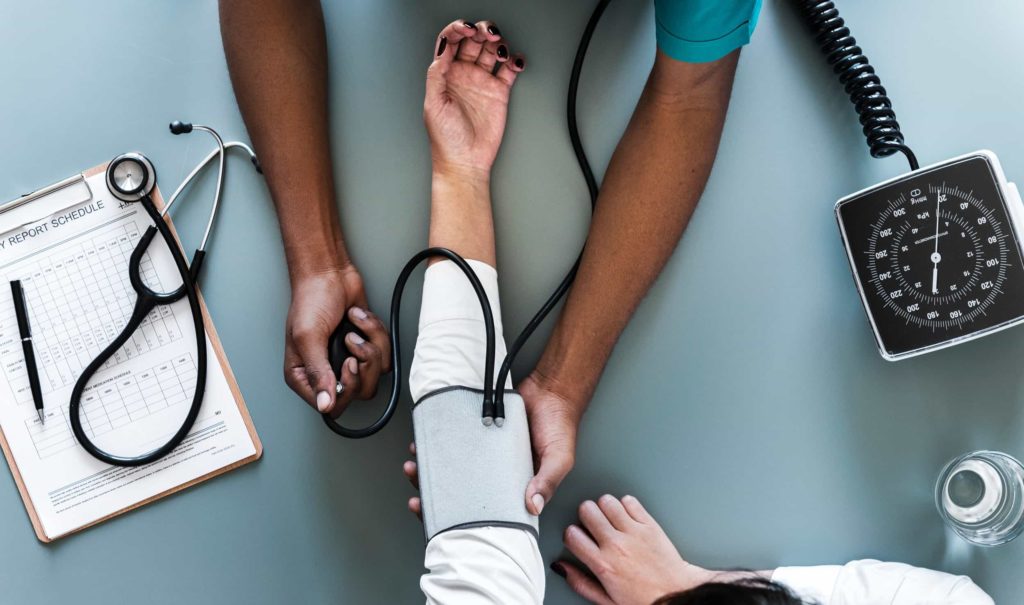
Applicants and members of the family unit who apply for a visa may need to undertake health examinations to prove that they meet the health requirement. In some cases, non-applying family members may also need to undertake health examinations.
Who needs to undertake the health examinations?
Usually, it is the visa applicant and members of their family unit who are applying for visas that may require medical examinations.
However, in some circumstances, family members who are not coming to Australia with you might also need to have health examinations (e.g., in an application for a Subclass 186 (Employer Nomination Scheme) visa, each member of the family unit of the applicant who is not an applicant for the visa must still satisfy the health criteria, unless “it would be unreasonable” to do so).
Who is a “member of the family unit”?
Generally speaking, members of the family unit of an applicant include:
- spouses and de facto partners;
- a child or step‑child who:
- has not turned 18; or
- has turned 18 but has not turned 23 and is dependent; or
- has turned 23 and is wholly or substantially reliant on the other person for financial support because the first person is incapacitated for work due to the total or partial loss of the first person’s bodily or mental functions.
However, keep in mind that the definition of “members of a family unit” differs between the various visa categories, so you should seek specific advice to determine the implications for you.
Ok then, so what are the health requirements for non-protection, refugee and humanitarian entrants?
The health examinations needed for a non-protection, refugee and humanitarian visa application depend on several factors, including:
- what visa is being applied for (for example, temporary or permanent);
- the duration of the stay in Australia;
- the level of tuberculosis (TB) risk in the country of passport;
- whether health is of special significance, based on what the applicant wants to do in Australia;
- any special circumstances; and
- whether any significant medical conditions were found during the examination or during the visa application process.
The following table sets out a helpful summary of the requirements:
Country TB Risk Level |
Temporary stay in Australia of less than 6 months |
Temporary stay in Australia of 6 months or more |
Permanent and provisional visa applicants |
| Countries that do not generally require immigration medical examinations (Low Risk) | No immigration medical examination required unless special significance applies. | No immigration medical examination required unless special significance applies. |
|
| Countries that do require immigration medical examinations (High Risk) | No immigration medical examination required unless special significance applies |
|
|
There are differing immigration medical examinations required for protection, refugee and humanitarian visa applicants, but they are not discussed in this article.
It’s also helpful to note that there are no health examination requirements for a limited number of visas:
- Maritime Crew (Subclass 988)
- Resident Return (Subclass 155)
- Resident Return (Subclass 157)
- International Relations (Privileges and Immunities stream applicants only) (Subclass 403)
- Diplomatic (Subclass 995)
- Special Category (Subclass 444)
- Special Purpose visas
What is considered special significance?
Where an applicant for a temporary or permanent visa declares they intend to participate in any of the special significance activities in the below table, additional immigration medical examinations are required:
Intended Activities |
Immigration Medical examinations required |
| You are from a country with a higher risk of TB and likely to enter a healthcare or hospital environment |
|
| You are pregnant and plan to have your baby in Australia |
|
| If 15 years or older and intend to work as (or study to be) a doctor, dentist, nurse or ambulance paramedic |
|
| You are 15 years old or older and intend to work as, or study or train to be a health care worker, or work within a health care, aged care or disability care facility while in Australia, and are from a country with a higher risk of TB |
|
| You are likely to work (or be a trainee) at an Australian childcare centre (including preschools and creches) |
|
| You are aged 75 years or older and applying for a Visitor visa (subclass 600) |
|
The Department determines an applicant’s special significance by referring to the health declaration in the visa application form.
Hang on, which countries are considered “low risk” and “high risk” of TB, and why?
A country’s risk assessment is determined with reference to World Health Organisation reports in relation to tuberculosis. The Department considers the below countries to be low risk (conversely, any country not listed is considered a high risk):
- Albania
- American Samoa
- Andorra
- Anguilla
- Antigua and Barbuda
- Argentina
- Armenia
- Aruba
- Australia
- Austria
- Bahamas
- Bahrain
- Barbados
- Belarus
- Belgium
- Belize
- Bermuda
- Bonaire
- Bosnia and Herzegovina
- Bouvet Island
- Bulgaria
- Cabo Verde
- Canada
- Cayman Islands
- Chile
- Christmas Island
- Cocos (Keeling) Islands
- Comoros
- Cook Islands
- Costa Rica
- Croatia
- Cuba
- Curacao
- Cyprus
- Czech Republic
- Denmark
- Dominica
- Egypt
- Estonia
- Falkland Islands
- Faroe Islands
- Finland
- France
- French Polynesia
- Germany
- Gibraltar
- Greece
- Grenada
- Guadeloupe
- Guam
- Guatemala
- Heard and McDonald Islands
- Holy See, The
- Honduras
- Hungary
- Iceland
- Iran
- Iraq
- Ireland
- Israel
- Italy
- Jamaica
- Japan
- Jordan
- Kuwait
- Latvia
- Lebanon
- Liechtenstein
- Lithuania
- Luxembourg
- Malta
- Mauritius
- Mexico
- Monaco
- Montenegro
- Montserrat
- Netherlands
- Netherlands Antilles
- New Caledonia
- New Zealand
- Norfolk Island
- Norway
- Occupied Palestinian Authority
- Oman
- Pitcairn Island
- Poland
- Portugal
- Puerto Rico
- Republic of North Macedonia
- Republic of Maldives
- Reunion
- Saint Eustatius & Saba
- Saint Helena (Ascension and Tristan da Cunha)
- Saint Kitts and Nevis
- Saint Lucia
- Saint Martin (Dutch)
- Saint Vincent and the Grenadines
- Samoa
- San Marino
- Saudi Arabia
- Serbia
- Seychelles
- Slovakia Republic
- Slovenia
- South Georgia and the South Sandwich Islands
- Spain
- Suriname
- Svalbard & Jan Mayen
- Sweden
- Switzerland
- Syria
- Togo
- Tokelau
- Tonga
- Trinidad and Tobago
- Tunisia
- Türkiye
- Turks and Caicos Islands
- United Arab Emirates
- United Kingdom (British citizen)
- United States of America
- Uruguay
- Vanuatu
- Virgin Islands (British)
- Virgin Islands (US)
- Wallis and Futuna
Which countries are considered “low risk” and “high risk” of hepatitis B?
For hepatitis B, a country’s risk assessment is determined with reference to Coalition for Global Hepatitis Elimination data. The Department considers the below countries to be low risk (again, any country not listed is considered a high risk):
- Afghanistan
- Algeria
- Andorra
- Anguilla
- Antigua and Barbuda
- Argentina
- Armenia
- Aruba
- Austria
- Bahamas
- Bahrain
- Barbados
- Belgium
- Belize
- Bermuda
- Bhutan
- Bolivia
- Brazil
- British Virgin Islands
- Canada
- Cayman Islands
- Chile
- Colombia
- Costa Rica
- Croatia
- Cuba
- Curacao
- Cyprus
- Czech Republic
- Denmark
- Dominica
- Dominican Republic
- Ecuador
- Egypt
- El Salvador
- Equatorial Guinea
- Estonia
- Falkland Islands
- Federal Democratic Republic of Nepal
- Faroe Islands
- Fiji
- Finland
- France
- French Guiana
- French Polynesia
- Germany
- Gibraltar
- Greece
- Greenland
- Grenada
- Guadeloupe
- Guatemala
- Haiti
- Holy See, The
- Honduras
- Hungary
- Iceland
- Iran
- Ireland
- Isle of Man
- Israel
- Italy
- Japan
- Jersey
- Jordan
- Kosovo
- Kuwait
- Latvia
- Lebanon
- Libya
- Liechtenstein
- Luxembourg
- Malta
- Mexico
- Monaco
- Montenegro
- Montserrat
- Morocco
- Netherlands
- New Caledonia
- New Zealand
- Nicaragua
- Norway
- Occupied Palestinian Territories
- Pakistan
- Panama
- Paraguay
- Peru
- Pitcairn Island
- Poland
- Portugal
- Puerto Rico
- Qatar
- Republic of North Macedonia
- Reunion
- Russia
- Saint Barthelemy
- Saint Helena, Ascension and Tristan da Cunha
- Saint Kitts and Nevis
- Saint Lucia
- Saint Martin (French Part)
- Saint Pierre and Miquelon
- Saint Vincent and the Grenadines
- San Marino
- Saudi Arabia
- Serbia
- Sint Maarten (Dutch part)
- Slovak Republic
- Slovenia
- South Georgia and the Sandwich Islands
- Spain
- Suriname
- Sweden
- Switzerland
- Taiwan
- Trinidad and Tobago
- Turks and Caicos Islands
- Ukraine
- United Arab Emirates
- United Kingdom
- United States of America
- Uruguay
- Venezuela
- Wallis and Futuna
- Western Sahara
- Zambia
What if a member of the family unit fails the health examinations?
The impacts of a health examination failure depend on the class of visa that you have applied for:
- Certain visas enforce the “one fail, all fails rule,” which means that a failure of a health examination for any family unit member will lead to the entire visa application being refused.
- Alternatively, some visas permit the removal of the failed applicant from the visa application, allowing other family members to obtain a visa.
- Lastly, some visas permit a “health waiver” application where a delegate of the Department is satisfied that the granting of the visa would be unlikely to result in:
- undue cost to the Australian community or
- undue prejudice to the access to health care or community services of an Australian citizen or permanent resident.
A health waiver can only be exercised for visa applicants (and non-migrating members of the family unit) for certain visas. This includes:
- all Class XB Refugee and Humanitarian visas
- certain skilled, business, and other non-humanitarian migration visas
- the TU-500 (Foreign Affairs or Defence Sector) student visa; and
- the Temporary Skill Shortage (subclass 482) visa
A health waiver can be a complex process, and we strongly suggest you obtain tailored immigration advice before going ahead with such a matter.
Any questions?
If you have any questions about health examinations for you or your family members, or require further information about health waivers, feel free to contact us by email at [email protected] or phone +61 3 9016 0484.


Hello
My wife and I have applied for 186 direct entry stream visa and now we are in BVA and currently, my wife is pregnant. She was not pregnant at the time when the application was submitted and when the e-referral letter was generated due to which we had answered ‘No’ to the question Are you pregnant?
Considering the current situation she will not be able to complete the chest X-ray examination. Can you please advise:
1. How this would affect the progress of our application?
2. If we need to submit the 1392 form to the medical service provider and to the home affairs?
3. Are any additional tests to be completed if so how to update our e-referral letter (Tests booked for 4th Feb 22 with the current HAP ID)?
Many thanks.
Hi vishnu,
What happend, did immigration accepted youe form 1392?
Hello Vishnu,
I am also in the same boat now. Can you please let me know if there was any difference in attaching Form 1392?